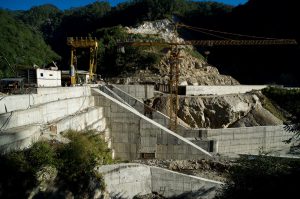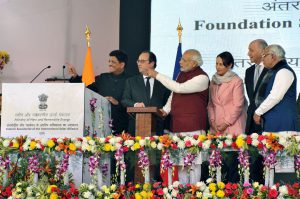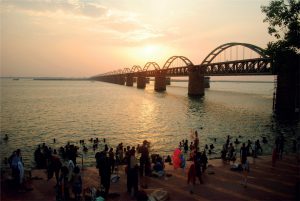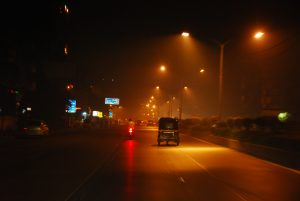There has been increasing criticism of the hydropower industry in Bhutan. Recently an Indian think tank, the Vasudha Foundation, came out with a blistering report focussing on the financial, ecological and other problems of the sector in the country. This has resulted in greater public discussion and debate. Addressing these concerns, the managing director of Druk Green Power Corporation, Chhewang Rinzin, spoke to thethirdpole.net.
Dawa Gyelmo (DG): A common complaint is that information is missing from the public domain. Why are documents , such as environmental assessments and detailed project reports, not made available online for public view?
Chhewang Rinzin (CR): Where there are disclosure requirements, as with the Dagachhu and Nikachhu projects constructed with support from the Asian Development Bank (ADB), the World Bank (WB) and other international financial institutions, all the documents were uploaded on to the internet.
If the government of Bhutan or the government of India had the disclosure requirements for the Punatsangchu-I and II and Mangdechu projects, the relevant documents would be uploaded as well.
It is only in recent months that people have started demanding to see the detailed project reports (DPRs) and environment assessment studies, and the social and environmental impacts of the hydropower projects. Now that people want the documents to be uploaded for public view, I am sure all the documents will be uploaded.
See: India Bhutan hydropower cooperation fraying at the edges
DG: Recently the Vasudha Foundation published a report on Bhutan’s hydropower projects and pointed out several issues, including resettlement of those displaced by dams, could you comment on that?
CR: Vasudha is an Indian foundation, and in India there are large challenges with displacement, resettlement and rehabilitation because of the size of the population. But in Bhutan when we talk about resettlement and rehabilitation for the same size project, we are talking about less than one thousand people. It is a highly manageable sort of environment.
Yes, I suppose we could improve on what we are doing, but this would require more than the hydropower sector which only provides the money to rehabilitate and resettle. It is for the other agencies to actually implement it. This would require changes to the Land Act, Environment Act, Forestry Act, the power rate, the working of the Ministry of Home and Cultural Affairs, and many other areas.
Except for Punatsangchu-I, where for some reason some families are still unhappy with the land given by government for resettlement, other projects have no issues with resettlement. I think maybe Vasudha could have conducted a poll and shown how many people have been resettled and how many have not, and then have shown the scale of the problem.
![Druk Green Power Corporation team at the Takti waterfall near Chukha project [image courtesy Chhewang Rinzin]](/wp-content/uploads/2016/11/Bhutan-dam-CR.jpg)
See: Bhutan’s PM defends hydropower dams against blistering report
DG: Do you think recommendations suggested in Vasudha Foundations’s report should be taken into consideration? How do you view the report in general?
CR: In many ways the report helps us in understanding that maybe we need to do little bit more, but it would have been better if the report had mentioned whether we are following the laws and policies of the Kingdom of Bhutan. If the policies and laws of Bhutan are not adequate then that is something beyond the hydropower sector.
But I do agree that, even without Vasudha Foundation’s report pointing it out, maybe we need to do a little bit more. Not because of our experience but because of the experience in South Asia. If you look at India, they were investing a big amount into the construction of hydropower projects of 10,000-20,000 megawatts (MW) around a decade ago. Today many bigger projects that started have come to stop because of political reasons.
From that point of view, I think Bhutan has to learn and ensure that we do not get into same type of trap. That would have been more useful than the existing report, which was not balanced, and seemed to accuse us of doing nothing. We are investing millions and millions into environment and social impact assessment and also into implementing the mitigating measures, and this was not represented.
DG: The general public is concerned about the huge cost escalation of hydropower projects like Punatsangchu-I and II and Mangdechu. This was also in the report.
CR: There are two ways of looking at it when it comes to cost escalation. In the case of Nikachhu and Dagachhu, the projects that we did with ADB or WB financing, the bankers like to know in advance the probable cost of the project on completion. In calculating their detailed project reports (DPRs) we not only take the hard cost as of that year of preparation but also build in the price variations for the period of the construction. We also include the interest of the financing charge.
However, in case of Punatsangchu-I and II and Mangdechu, the project cost is taken at a time when the DPR is finalised. The Punatsangchu-I DPR was finalised in 2006, and we were looking at the cost of BTN 35 billion (USD 520 million). [The cost has now gone up to BTN 97 billion]. If we add 14-15 years of variations and cost of financing [during the construction phase] it would go up to double or more. Our financing costs are over 10%.
In the case of Punatsangchu-I and II, there have been problems with the geotechnical conditions, but that alone did not raise the cost three times. The cost escalation is also because of the additional investigations after we found out about the complicating geotechnical conditions. With every year of delay in a project the cost rises substantially. There are price variations, an inflation rate of 6%, plus the cost of debt at another 10%.
The general public is concerned about the cost escalation, as the country has to pay at the end of the day. We need to worry.
DG: What impact does the huge cost escalation of hydropower have on Bhutanese economy?
CR: There are two sides to it. In the case of the Nikachhu and Dagachhu projects the power tariff rates were fixed before the construction started, because no banker would give you money if they do not know what the project is going to earn.
In the case of the Punatsangchu-I and II and Mangdechu projects, the tariffs are not fixed; the tariffs are what the government of India’s expenditure, plus the amount India would pay for the electricity. Repaying the loan is not an issue. But, for these projects, we consume a lot more power than we anticipated. Because of the higher cost, the rate at which we will sell power internally will go up to compensate.
DG: Recently the Assam government blamed Bhutanese authorities of releasing huge volume of water from the Kurichhu hydropower project, flooding Manas National Park. They also claimed that they were not informed about the release of water beforehand.
CR: We do not agree at all and Bhutan has been telling them the same for the last 14 years. They brought people from India’s Central Water Commission (CWC) all the way from Guwahati in India to see the dam. The CWC looks after early warning signs or flood signs, and has established a large infrastructure within Bhutan, with officials deployed here. They share data with both the states of Assam and West Bengal in India, and this data sharing continues on daily basis especially during the summer season.
The government of India appoints a senior official from the CWC on deputation with the department of hydro-met services in Bhutan, to oversee all technical and mechanical officers. If any state has any queries they can call him and ask if Bhutan released any water.
There are no big dams in Bhutan. All hydropower projects like Chukhu, Tala and Kurichhu have small dams. None of these dams would add even the smallest amount to the flood level other than the normal flow of water in the river. None of the dams in Bhutan today are capable of causing a flood anywhere.
DG: Can you explain the effects of climate change on hydropower production?
CR: If you look at the rest of the world, for the last 20 years, environmentalists and NGOs were against the reservoir schemes, but suddenly countries like India, Germany, Switzerland, Norway and France have started saying that they want to invest in wind and solar energy.
Bhutan is currently only building run-of-the-river schemes, most of it supplying power to India. India is building solar and wind power stations, they need to be supplemented by hydropower which can be started and shut off when required. In the future Bhutan will have to start to look into investing in reservoirs. Many nations are now investing in building huge reservoirs and pump storage that means they can store water and release it when they need power.
Additionally, the glaciers are melting and the snowfall is much less than it was in the 1960s and 70s. That battery that you have in a form of snow and glaciers up there – which melts in the spring months and brings in additional water – will slowly go away. That is bad news. But the good news is that with climate change, many say that the monsoons will be wetter and there will be more discharge.
We work very closely with the Norwegians. A study by Norwegians that covers a whole century from 2000 till 2100 shows that the quantum of water in the river could increase by 7% or decrease by 13%. In such a case, with no ice on the mountains, the best thing is to invest in reservoirs like the Swiss, Norwegians and Austrians have done. We can build both large and small reservoirs in the upper reaches of the mountain. When it rains we could store water, and when it is dry we can use it. Then we can have reliable discharge for the hydropower projects.
See: Can dams replace glaciers?
![The white bellied heron is a critically endangered species [image courtesy the Royal Society for Protection of Nature, Bhutan]](/wp-content/uploads/2016/11/White-bellied-herons-RSPN.jpg)
CR: We should be lot more careful with the white bellied heron, and the government has spent a great deal of money on trying to protect it. However species like the Mahaseer fish are not just Bhutan’s responsibility. These species are also found in Indian states such as Arunachal Pradesh and Sikkim, as well as in Nepal. It should be the collective effort of all.
This is where carbon neutrality comes in. Bhutan has already promised the world through our Constitution that we will be carbon neutral and keep 60% of our land mass under forest cover. I don’t know what more can we do. We are just 700,000 people.
![<p>Chhewang Rinzin, managing director of Bhutan’s Druk Green Power Corporation [image courtesy Chhewang Rinzin]</p>](https://dialogue.earth/content/uploads/2016/11/Chhewang-Rinzin-300x291.jpg)








